Welcome to the enchanting city of Vienna, the Austrian capital where history dances with elegance and culture beckons from every corner. Occupying a strategically significant location on the storied Danube River, Vienna’s centuries of history contribute a layer of old-world patina to its modern-day vibe. Today the city is known for everything from iconic palaces and grand opera houses to cozy coffee houses and picturesque parks, giving visitors a multitude of memorable things to do in Vienna.

Imagine strolling through the magnificent halls of the Schönbrunn Palace, once the summer residence of the Habsburg emperors, and marveling at the opulent Baroque architecture that whispers tales of a bygone era. Or take in a classical performance featuring the unmistakable strains of a Mozart concerto, a Strauss waltz, or a Beethoven etude at the Vienna State Opera.
Vienna’s charm extends beyond its architectural wonders and melodic symphonies. Explore the busy Naschmarkt, a bustling open-air market where fresh produce and exotic spices mingle, enticing you to sample local delicacies and indulge in culinary adventures. Take a leisurely walk through the historic streets of the Innere Stadt, the historic center of Vienna, Vienna’s UNESCO World Heritage Site-listed city center, and witness the juxtaposition of medieval charm and modern sophistication.
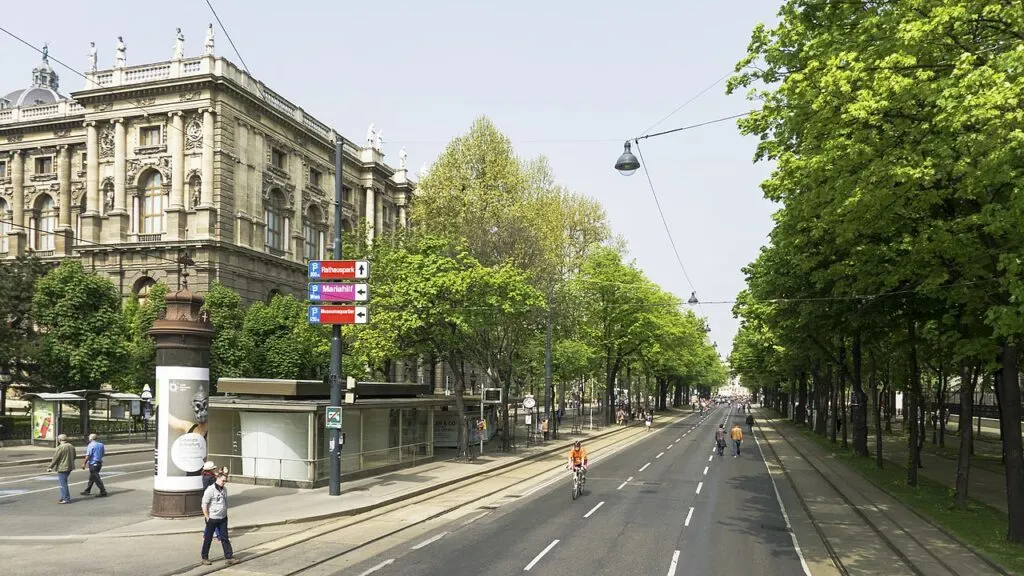
Vienna, as you’ll discover, is passionate about its art, with a plethora of top-notch museums, such as the Belvedere which features the masterpieces of Gustav Klimt, and the Albertina, with its impressive graphic arts collection. And you’ll want to relax and unwind in Vienna’s lush green spaces, such as the enchanting gardens of the Stadtpark or the sprawling Prater Park, home to the historic Riesenrad Ferris wheel.
My goal in this post is to help you make your stay in Vienna the most enjoyable it can be. Use the information and tips here to make the most of your visit. Whether you’re a history buff, a music lover, or a culinary fan, your Vienna experience should ignite your enthusiasm and leave you wanting to return.
Get ready! I’m going to lead you through Vienna’s rich heritage, introduce you to a few of its hidden gems and acquaint you with the soul of the city. Hopefully, this post paint a vivid picture of Vienna’s essence and set the tone for the adventure that awaits you.
Table of Contents
This article contains affiliate links and/or references to our advertisers. We may receive compensation when you click on or make a purchase using these links.
How to Plan Things to Do in Vienna – Overview
Let’s delve into a detailed overview of Vienna, giving you context from its rich history, culture, and charming personality.
Strategically situated on the banks of the Danube River, Vienna is renowned for its architectural beauty and artistic heritage. The city’s history dates back to the Roman era when it was established as a military camp called Vindobona in the first century AD.
Throughout subsequent centuries, Vienna has undergone significant transformations. The city served as an imperial city for centuries. From 800 to 1806, it was a capital of the Holy Roman Empire, and it became the capital of the Austro-Hungarian Empire in 1556.
These historical periods have left an indelible mark on Vienna’s identity, particularly in the form of its architecture. The city’s flourishing blend of grand and elegant styles from Baroque to Art Nouveau is reminiscent of a glorious past.
The city’s interior contains an abundance of Baroque structures, which were popular under the rule of Empress Maria Theresa, wife of Holy Roman Emperor Francis I, who implemented a series of important reforms, and Emperor Franz Joseph, the husband of beloved Empress Elisabeth (‘Sisi’). The two sovereigns, especially Franz Joseph, made significant contributions to the monumental architecture found in the city center.
Vienna’s cultural scene is a testament to its artistic heritage, particularly in the field of music. Renowned composers have made an indelible mark on the city’s culture: Haydn, Mozart, Beethoven, Schubert, Strauss and Mahler are all well-represented in today’s concert lineups at grand venues like the Vienna State Opera House and the Musikverein.
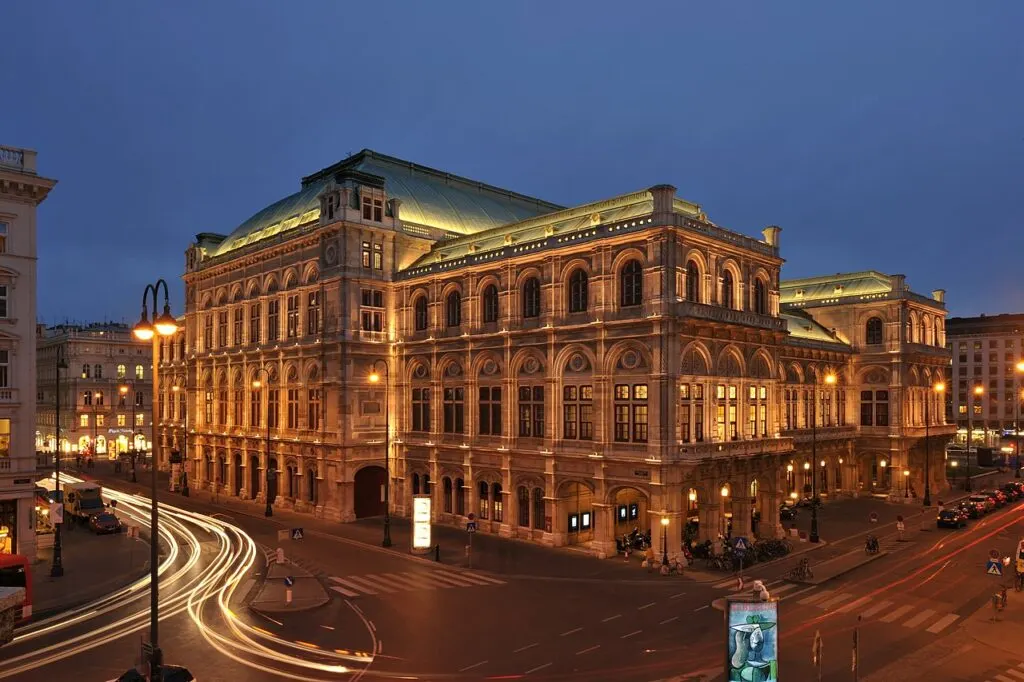
Art enthusiasts will want to spend hours in Vienna’s world-class museums and galleries. The Belvedere houses a remarkable collection of artworks, including Gustav Klimt’s masterpiece, “The Kiss.” The Albertina Museum showcases an extensive collection of graphic arts, while the Leopold Museum features an exceptional array of Austrian modern art.
Vienna’s coffee house culture is legendary and offers a delightful opportunity for visitors to immerse themselves in inviting venues. Not only is the coffee outstanding, but the pastries are out of this world! Come for coffee and conversation, or bring a book if you’re solo, and soak in the atmosphere.
The city’s geographical location is part of its draw, with the Danube River meandering through Vienna and providing scenic views and recreational opportunities. Vienna’s numerous parks, such as the Prater and the Stadtpark, offer green spaces where visitors can relax in natural beauty.
Vienna’s cultural calendar is brimming with interesting events and festivals. If you visit over New Year’s, be sure and wrangle tickets to the Vienna Philharmonic. The free six-week open air Wiener Festwochen (Vienna Festival) kicks off the summer season in musical style.
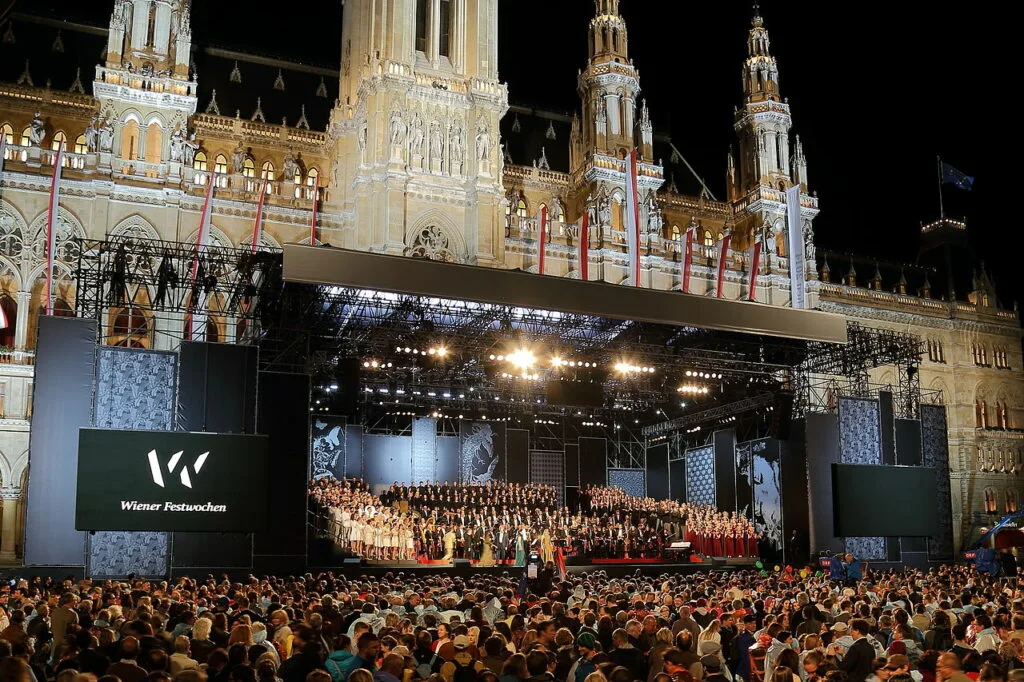
Vienna’s history, splendid culture, and geographical location all contribute to create an extraordinary destination that beckons visitors. The city’s imperial past, architectural masterpieces, renowned music and art scene, coffee house culture, and picturesque landscapes make Vienna a captivating and unforgettable place to visit.
Plan to immerse yourself in Vienna’s historical atmosphere and take in the artistry of its musicians, museums and culinary masters to make the most of your visit!
Check out my post for more info on how to organize your itinerary: 3 Days in Vienna: The Perfect Vienna Itinerary
When is the Best Time to Visit Vienna?
Your preferences will be unique to you when you consider when is the best time to visit Vienna. Factors at play will be weather, tourist groups and crowds, and local events.
Vienna experiences an oceanic climate with warm to hot summers and cold winters. The city enjoys nearly 1,900 hours of sunshine per year, making it relatively bright. To make an effective plan for your trip, let’s take a look at the pros and cons of each season in Vienna:
- Spring (April to May): The spring shoulder season in Vienna, particularly April and May, will usually bring pleasant weather with mild temperatures. Outdoor attractions, such as parks and gardens, will put on an ideal show as the city begins to bloom with colorful flowers. In spring, there are fewer tourists compared with peak season; venues will be less crowded, and prices are likely to be lower for events and accommodations.
- Summer (June to August): Vienna experiences warm to hot summers, and residents take advantage of pleasant temperatures and long nights. Numerous outdoor events, concerts, and festivals occur over the summer, with many opportunities to enjoy Vienna’s cultural scene. But summer is also peak season for tourists, so you’ll contend with crowds and higher prices. Make sure you book accommodations and attractions in advance if you plan to visit during this period.
- Fall (September to October): Fall is another great time to visit Vienna. September and early October have pleasant temperatures with lingering warmth. The city has fewer crowds compared with the summer months. Also, Vienna hosts several events and festivals during this period, including the Wiesn, Vienna’s Oktoberfest. This local celebration is a cultural must during this season.
- Winter (November to February): Winter in Vienna can be cold. I visited in January, and temperatures dropped below freezing. However, at Christmas, the city transforms itself for the festive season with twinkling lights and markets. Vienna’s Christmas markets, such as the famous one in front of City Hall, offer a fairy-tale atmosphere with traditional foods and handicrafts. Visitors might like to ice skate or simply warm up with a cup of hot chocolate or mulled wine. Winter is also the low season for tourism, so you’ll find fewer crowds, few long lines and potentially lower prices for accommodations and attractions.
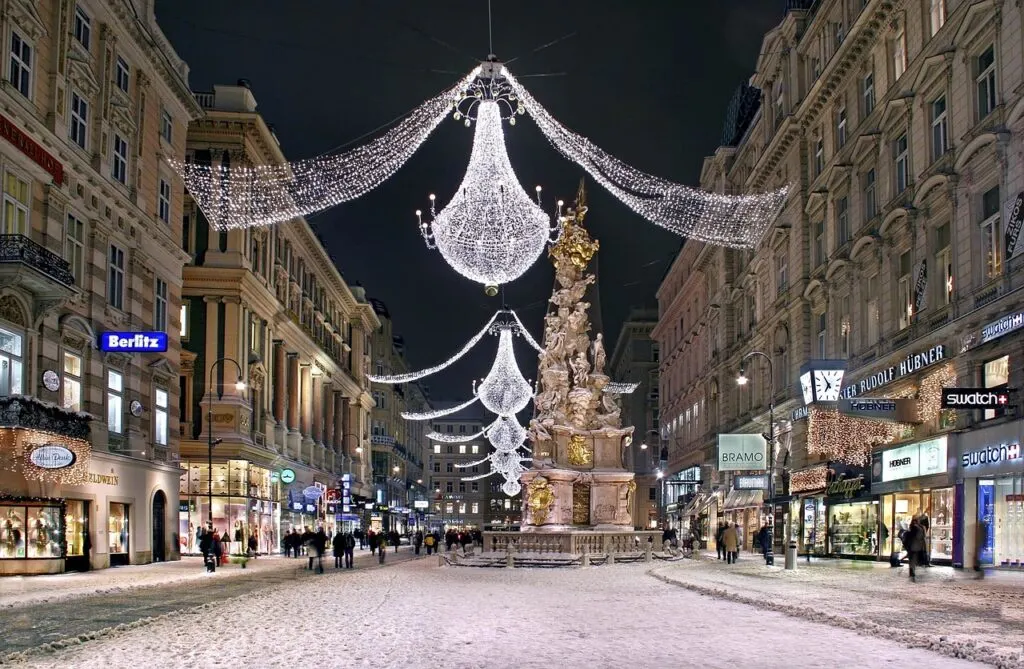
Considering these factors, the ideal time to visit Vienna depends on what you prefer. Spring and fall offer pleasant weather, fewer tourists, and potentially lower prices, making them popular choices. However, if you’re interested in experiencing summer events or the festive charm of Vienna’s Christmas markets, plan your visit accordingly.
Must-See Main Attractions in Vienna
Note: see my full write-up on Top Ten Vienna Attractions for First Timers for more detailed information on top attractions.
- Schönbrunn Palace and Gardens: It doesn’t get more Baroque than Schonbrunn Palace, the summer residence of the Habsburg Emperors. Explore the palace’s opulent rooms, including the stunning Hall of Mirrors, and wander through the meticulously manicured gardens. Don’t miss the Gloriette, a hilltop structure offering panoramic views of Vienna. For skip the line tickets and tour of palace and gardens, click here.
- St. Stephen’s Cathedral: The centerpiece of Vienna’s Innere Stadt, St. Stephen’s Cathedral (Stephansdom) is a Gothic masterpiece. The intricate details of its breathtaking facade give way to an interior rich with ornamental details. The catacombs can be visited by guided tour and you can climb more than 350 steps up to the viewing platform for panoramic city views. The cathedral is open daily, and visitors can attend Mass or enjoy one of the largest organs in the world during scheduled concerts. Click for a guided tour that reveals the secrets of St. Stephen’s Cathedral.
- Belvedere Palace: The Belvedere Palace is an unparalleled ensemble of Baroque architecture and beautiful gardens. It consists of two palaces, the Upper and Lower Belvedere, connected by a grand garden. In the Upper Belvedere, you’ll find an impressive art collection, while the Lower Belvedere features temporary installations. Click for a world-class tour with an art historian.
- Hofburg Imperial Palace: The Hofburg Palace served as the imperial residence of the Habsburg dynasty. Explore the various museums within the palace, such as the Sisi Museum, which offers insights into the life of beloved Empress Elisabeth, and the luxurious Imperial Apartments. Don’t miss the stunning Spanish Riding School, where you can witness the elegant equestrian performances of the famous Lipizzaner horses.
- Vienna State Opera: Attend a performance at the Vienna Opera House (Wiener Staatsoper) and drink in the city’s musical heritage. This stunning Neo-Renaissance building hosts both opera and ballet productions, and people really dress up for the more important events! While ticket prices vary, it’s possible to experience the opera at a more affordable price by purchasing standing tickets.
- Donauturm Tower: The Donauturm Tower offers breathtaking panoramic views of Vienna and the Danube River. With its recent renovation, this modernist tower provides a memorable experience. Located in the beautiful Danube Park, the Donauturm Tower is an excellent spot to enjoy the city’s skyline and surrounding region on a clear day. Take the opportunity to admire Vienna from above and capture stunning photographs.
- Hundertwasserhaus: Designed by the visionary artist Friedensreich Hundertwasser, the Hundertwasserhaus is a most unconventional residential building. Its exterior features irregular shapes, uneven floors, and an abundance of vegetation. While this is primarily a residential complex, visitors can admire the exterior and spend time in the nearby Hundertwasser Village, which has shops and cafes inspired by the artist.
- Prater Park and Wiener Riesenrad Ferris Wheel: The Prater is a lively amusement park in Vienna that offers various attractions and activities: thrilling rides, carnival games and other entertainment. One of its historic landmarks is the Riesenrad giant ferris wheel, a symbol of the city. Take a ride with skip-the-line tickets and enjoy stunning views of Vienna’s skyline.
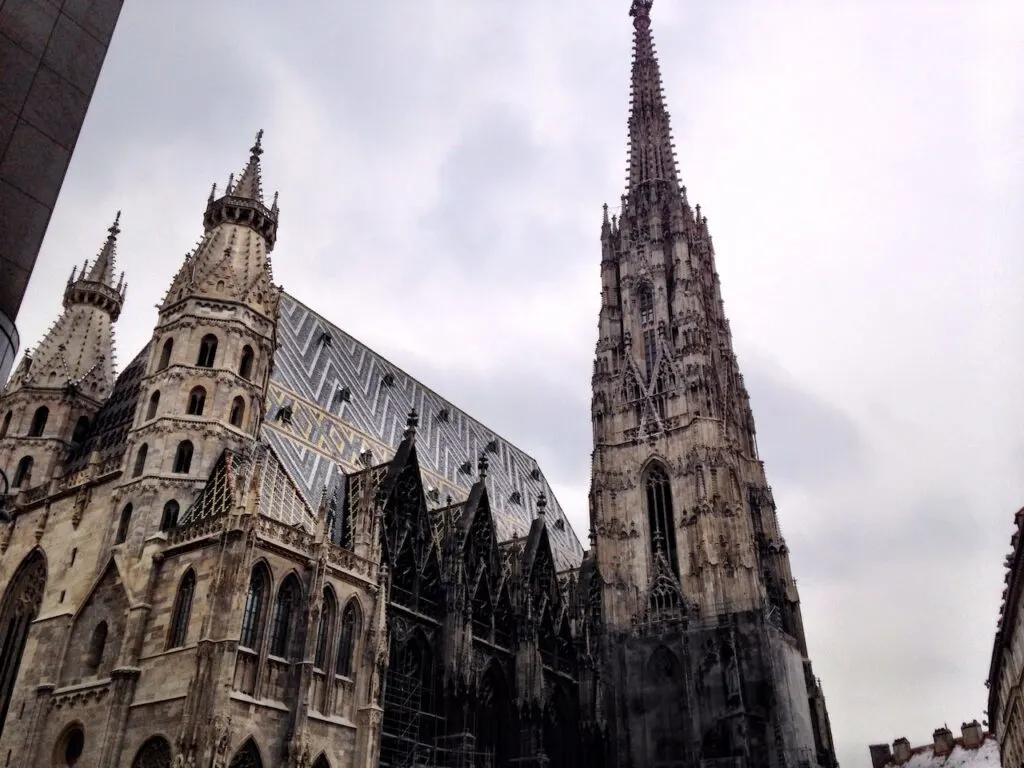
Viennese Cuisine and Dining Recommendations:
Vienna is known for a culinary scene that presents traditional dishes and unique flavors.
Traditional Dishes and Specialty Foods
Wiener Schnitzel: Austria’s national dish, Wiener Schnitzel, is a must-try. Schnitzel is a breaded and fried veal, pork, or chicken cutlet. It is typically served with a slice of lemon and parsley garnish.
Sacher torte: Indulge your sweet tooth with Sachertorte, a rich and decadent chocolate cake layered with apricot jam at the Hotel Sacher. This dessert has an interesting history and goes perfectly with Viennese coffee.
Tafelspitz: A traditional staple in Viennese cuisine, Tafelspitz is boiled beef or veal served in a flavorful broth with root vegetables. It is a hearty and satisfying dish, perfect for colder months.
Popular Restaurants and Cafes
Wiener Wiaz Haus: This restaurant offers a variety of Viennese specialties such as grilled chicken salad, Wiener schnitzels, goulash, and apple strudel. The food is delicious and the atmosphere is cozy.
Gösser Bierklinik: Located in the heart of Vienna, this restaurant is the oldest in Vienna, operating since 1566 in a building that dates from at least 1406. The restaurant offers a diverse menu of Viennese specialties.
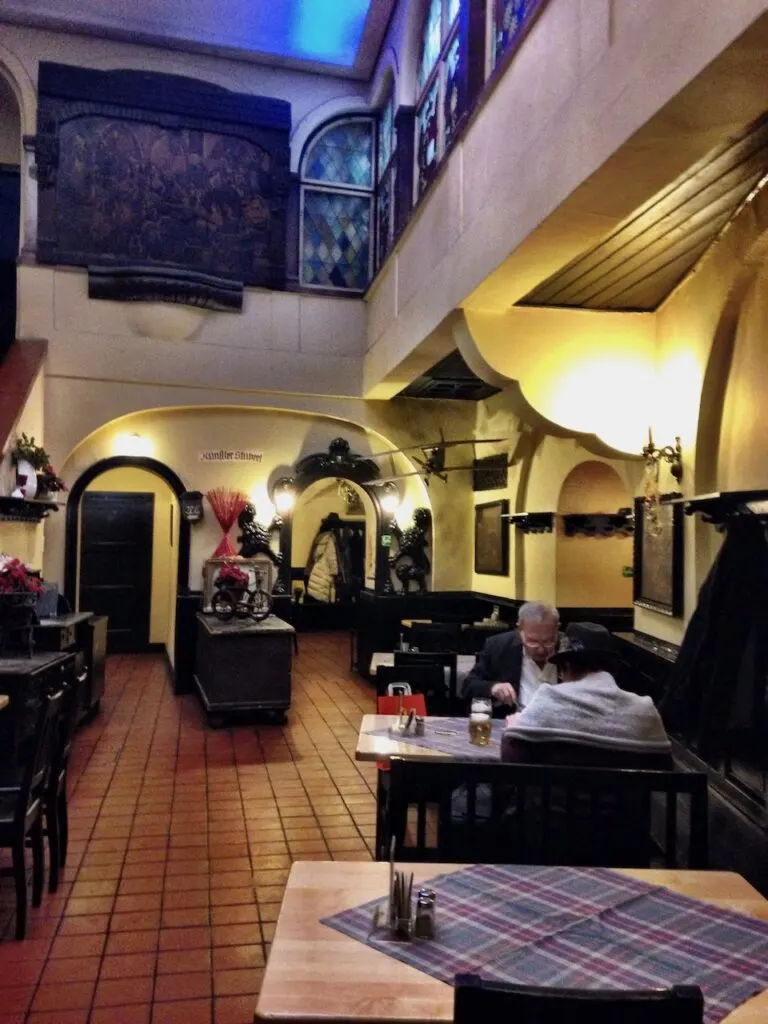
Naschmarkt: Vienna’s largest outdoor market, Naschmarkt, is a lively culinary destination, offering fresh produce, local favorites, and international selections. Visit for a taste of different flavors and absorb the atmosphere.
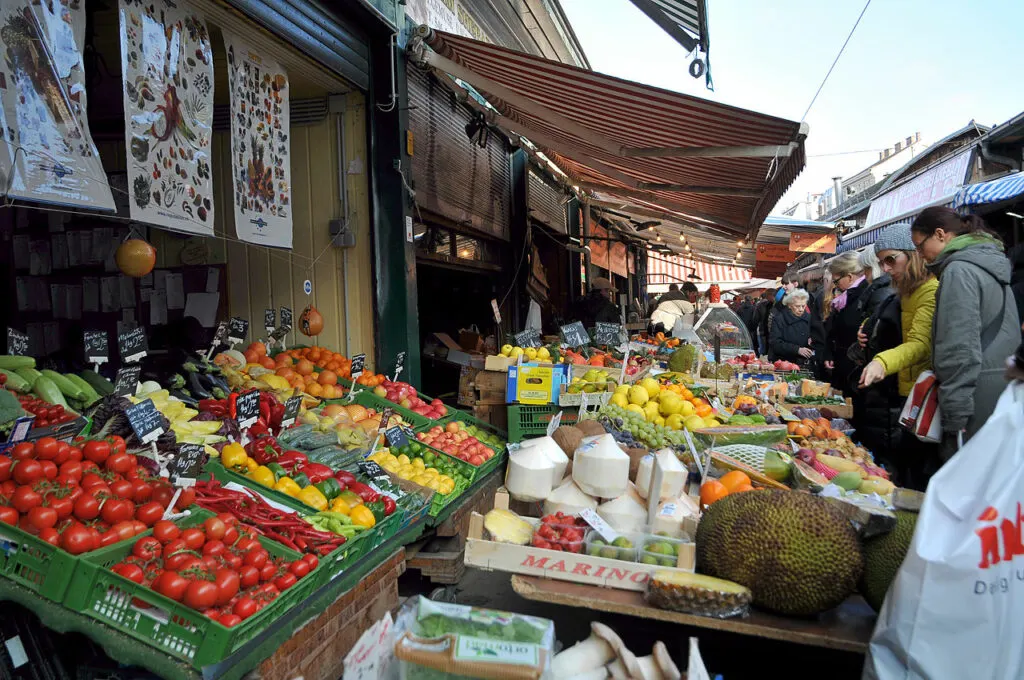
Café Sacher: A visit to Vienna would be incomplete without savoring the original Sachertorte at the elegant Café Sacher, which dates from 1876.
Unique Culinary Experiences
Viennese Wine: Vienna is the only capital city in the world with extensive vineyards within its boundaries. Explore Vienna’s urban vineyards and enjoy wine tastings at local wineries. Many vineyards are easily accessible by public transportation or on foot. We enjoyed a wonderful dinner with live music at Restaurant Mayer am Pfarplatz in the Grinzing neighborhood.
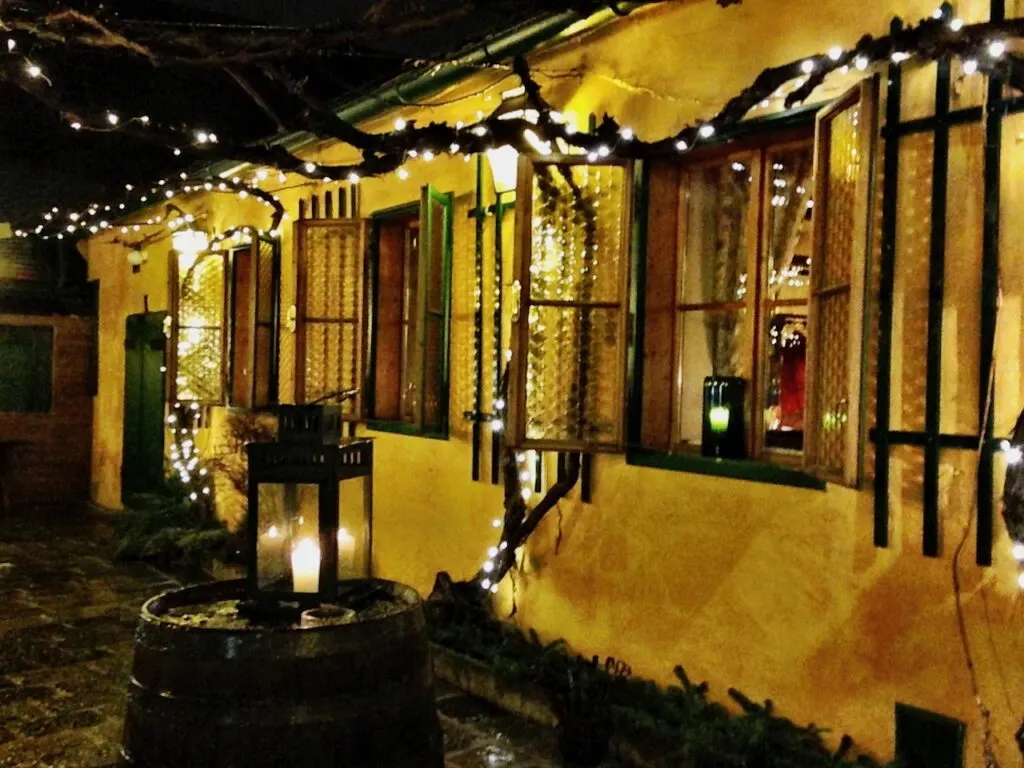
Viennese Coffee Culture: Vienna’s coffee house tradition is a significant part of its culinary heritage. Make sure you visit more than one of the city’s historic coffee houses. Café Central or Café Haweika are both stunning. Make sure you have a sweet cake or pastry to accompany your coffee. We liked Café Schwarzenberg for its everyday elegance.
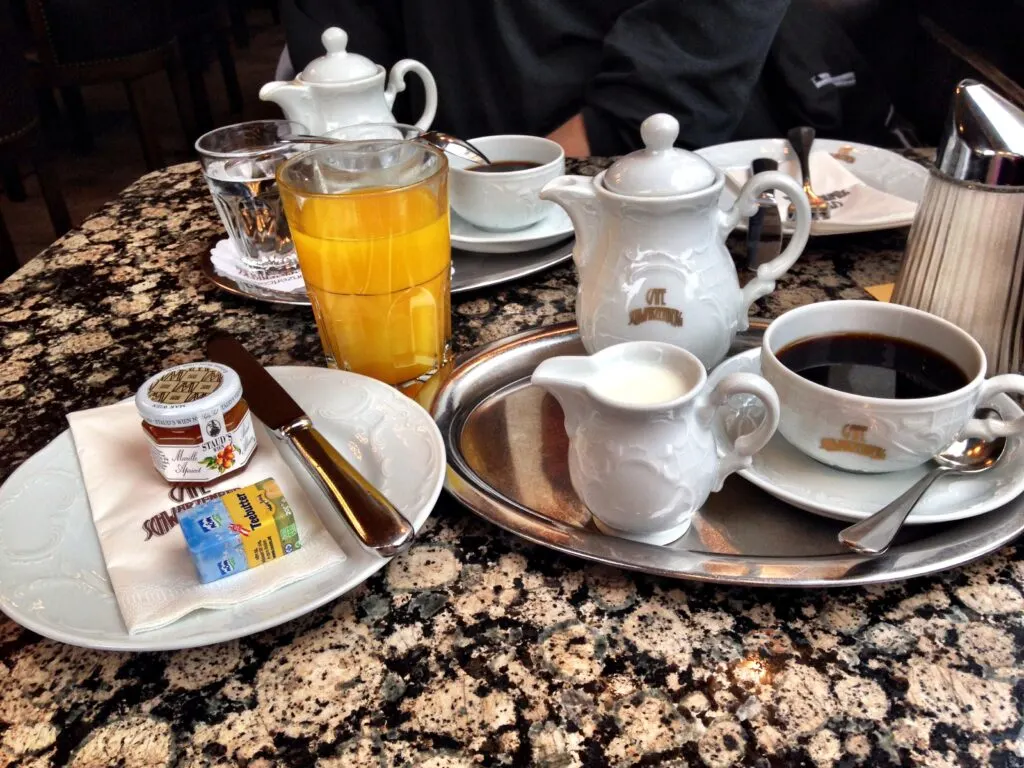
Food Tours: Consider joining a food tour in Vienna to discover the local culinary scene with an expert guide and sample a variety of dishes, visit markets and learn about the history of Viennese cuisine.
Notable dishes and restaurants to try in Vienna
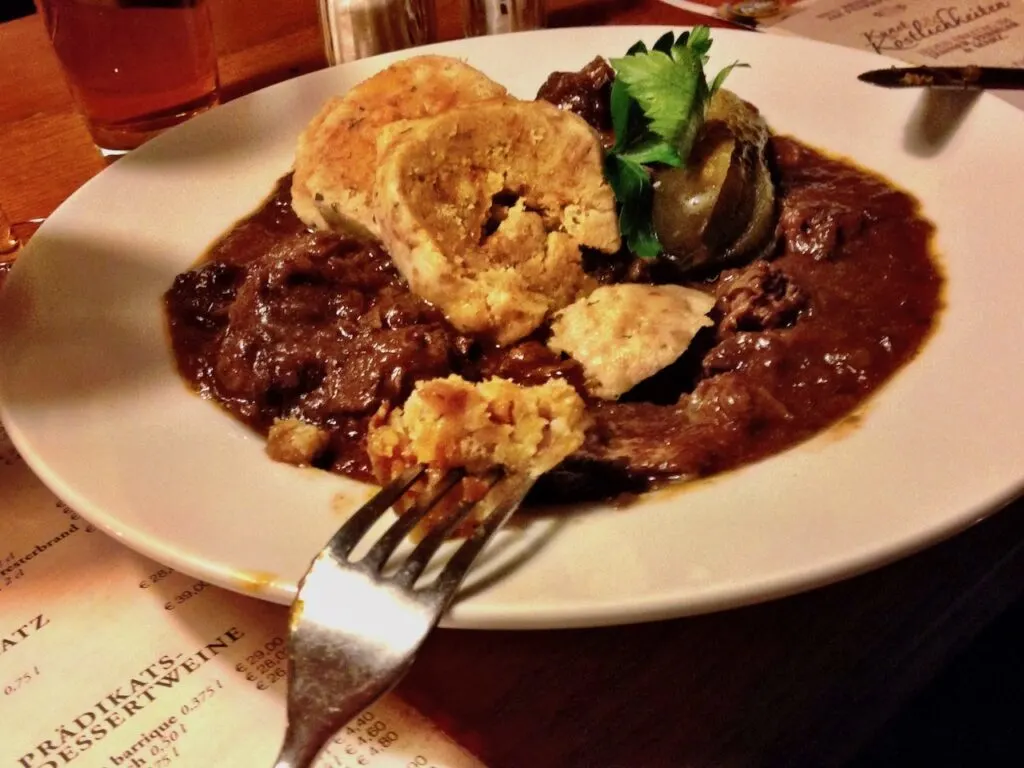
- Goulash: Goulash is a classic Viennese dish available in various variations. Goulash typically contains beef, pork, and lamb, along with diced tomatoes, potatoes, and green peppers. Sausage Goulash substitutes beef with Jagdwurst sausage and incorporates macaroni and ketchup into the sauce. This hearty and flavorful stew is enjoyed in traditional taverns as well as upscale restaurants.
- Wiener Schnitzel: Schnitzel is a breaded and fried veal, pork, or chicken cutlet. One of the best places to savor this iconic dish is at Figlmuller Wollzeile, a renowned restaurant in the city center. Schnitzelwirt is another restaurant which has a wide variety of schnitzel options, including pork, chicken, and turkey.
- Traditional Viennese Restaurants: Vienna is home to several traditional restaurants that offer an authentic dining experience. These establishments showcase Viennese cuisine and often feature classic dishes. Some notable traditional restaurants in Vienna include:
- Plachutta: Known for its Tafelspitz, a traditional boiled beef dish served with soup and side dishes.
- Griechenbeisl: One of Vienna’s oldest restaurants, offering high-class Austrian cuisine in a historic setting.
- Zwölf Apostelkeller: A cavernous beer hall with a long history, known for its eccentric ambiance and traditional Austrian fare.
Whether it’s savoring a comforting bowl of goulash or indulging in a perfectly prepared Wiener Schnitzel, Vienna offers a range of dining experiences that cater to different tastes and preferences.
Transportation and Getting Around Vienna
I found it easy to acclimate and get around in Vienna. Here is a quick guide to help you navigate the city efficiently:
Airports
Vienna International Airport (VIE) is the main airport serving the city, about 18km southeast of city center. It’s easy to get to the city center by train, bus, taxi, or rideshare.
Public Transportation
Vienna has an excellent public transport system with the following elements:
- U-Bahn (Underground): The U-Bahn has five lines that serve the entire metro area. It is a convenient and quick method to go between different districts and major attractions.
- Trams: Vienna has an extensive tram network which covers a great deal of the city. Trams are a fun way to explore different neighborhoods and orient yourself with the city.
- Buses: Buses provide additional coverage to areas not served by U-Bahn lines and trams rail. I rode the bus from City Center to the Donau Tower and the schedules were easy to navigate.
- S-Bahn (Suburban Trains): The S-Bahn is a convenient option for a day trip or exploring the outskirts of the city.
Tip: To use public transportation, consider purchasing a Vienna City Card, which offers unlimited travel within the designated zones for a specific duration. These cards provide flexibility and cost savings, especially for multiple journeys or an extended stay.
Car Rental
While public transportation is easy and efficient in Vienna, you might prefer to rent a car. Car rental services are available at Vienna International Airport and throughout the city. But also realize that driving and parking can be a challenge, particularly in the city center. You may want to use park and ride options from the city outskirts.
Bicycle Sharing
Vienna has a bike-sharing system called Citybike, which allows users to rent bicycles for short periods. There are numerous bike stations in convenient locations. Register online or at a Citybike station to access this service. You can also rent a kick bike, which is more like a scooter.
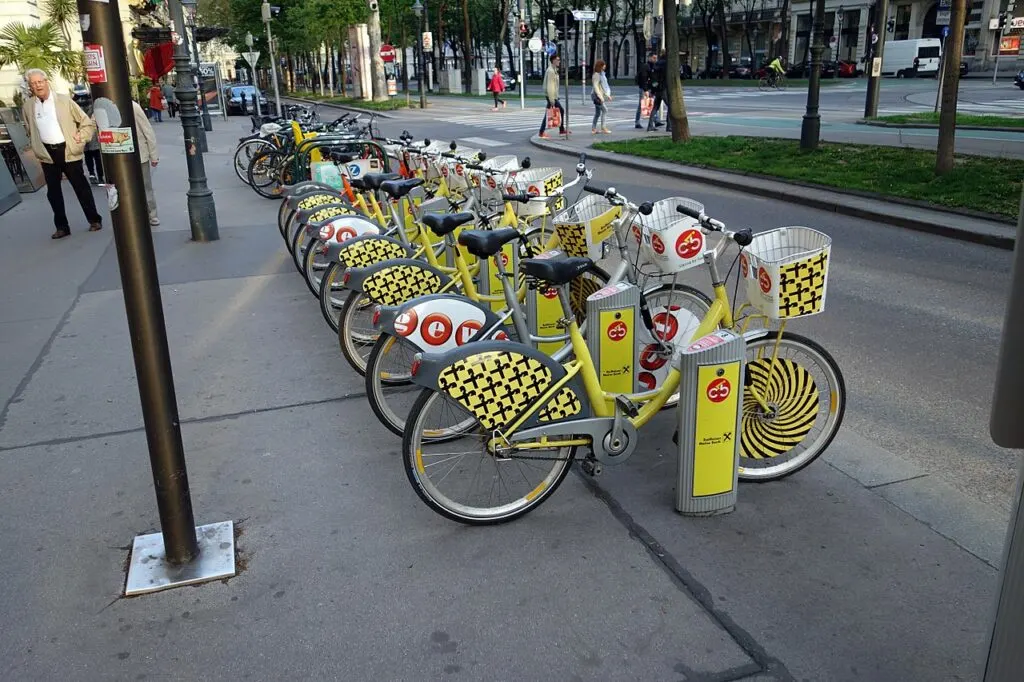
Ride-Sharing and Taxis
Ride-sharing services like Uber and local taxis are widely available in Vienna. With heavy luggage or travel during off hours, these are your best bet.
Additional Tips
- Vienna’s public transportation operates on an honor system, so ensure that you have a valid ticket and validate it before boarding.
- Routes vary on weekends and holidays. Off-peak schedules will vary also. Double-check your options in advance.
- Use mobile apps or online planners for real-time information on public transportation routes, schedules, and delays.
- Vienna has an extensive network of pedestrian-friendly streets, making walking a pleasant and viable option for shorter distances.
Overall, transportation options in Vienna are well-developed and efficient, suiting different preferences and needs. You’ll be able to get where you want to go easily and conveniently with a little planning.
Accommodations in Vienna
Note: see our comprehensive post on Best Hotels and Places to Stay in Vienna for popular hotels organized by district.
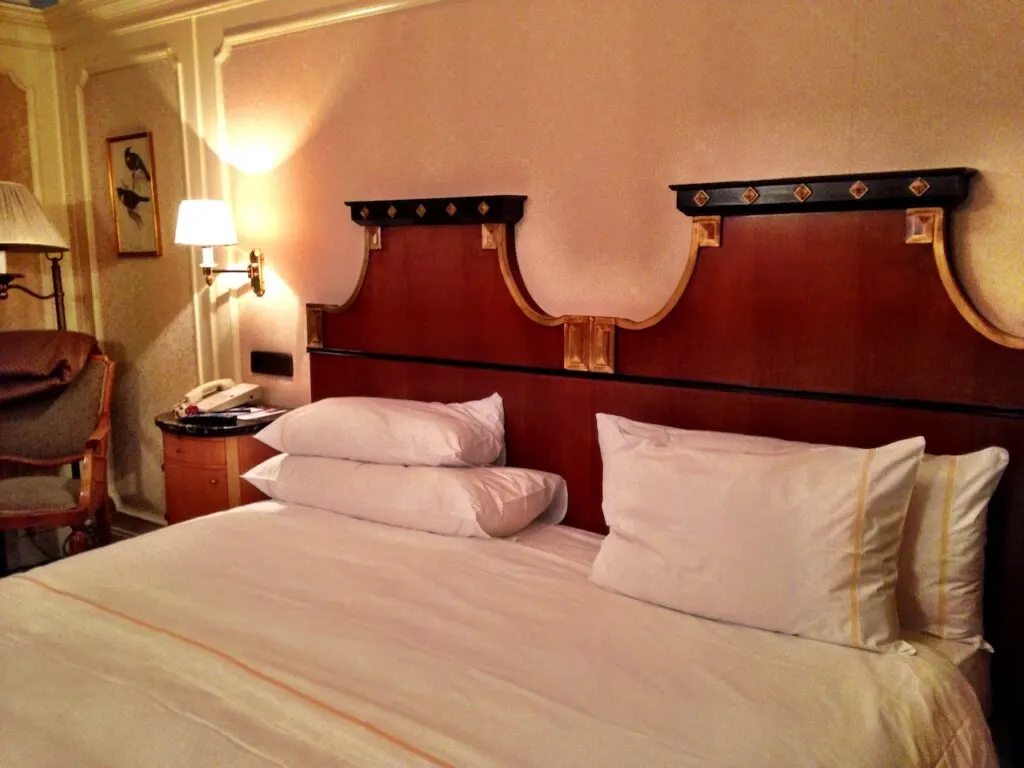
- Hotels: Vienna boasts a variety of hotels, ranging from luxurious 5-star establishments to more affordable options. Many hotels are centrally located, particularly in the Innere Stadt (city center), making it convenient to explore major attractions on foot. The Innere Stadt is known for its historic charm, iconic landmarks like St. Stephen’s Cathedral, and proximity to cultural sites such as the Vienna State Opera and Hofburg Palace. If you’re looking for a luxury hotel, this would be the neighborhood.
- Hostels: For budget-conscious travelers or those seeking a social atmosphere, hostels in Vienna offer affordable accommodation and the opportunity to meet fellow travelers. The district of Leopoldstadt, located just northeast of the city center, is home to several hostels and the Prater amusement park, with the iconic Riesenrad Ferris wheel.
- Vacation Rentals: Vacation rentals, such as apartments or holiday homes, provide a more independent and home-like experience. They are particularly suitable for families, groups, or those looking for longer stays. Websites like Vrbo offer a wide selection of vacation rentals throughout Vienna, allowing visitors to choose accommodations in various neighborhoods based on their preferences and proximity to attractions.
- Homestays: Staying with a host family can offer an immersion into daily life and create a more personalized experience. Check out opportunities to do this at Homestay.com and enjoy a deeper connection with host families who are eager to introduce you to their neighborhood.
Click to expand and use my handy interactive map to peruse and book your hotel or VRBO accommodations in Vienna:
Popular Neighborhoods or Areas to Stay in Vienna:
- Innere Stadt: The historic city center is an ideal location for those wanting to be in the heart of Vienna’s attractions, restaurants, and shopping streets. Here you will find higher-end and boutique hotels, as well as luxury apartments.
- Leopoldstadt: As mentioned earlier, Leopoldstadt is a youthful district with high-spirited energy. Look for hostels, budget hotels and vacation rentals here.
- Landstrasse: Southeast of the city center, this large district is home to the Belvedere Palace complex and museums such as Kunst Haus Wien, a Gaudi-like former furniture factory designed by Hundertwasser, as well as Hundertwasserhaus, a residential architecture statement.
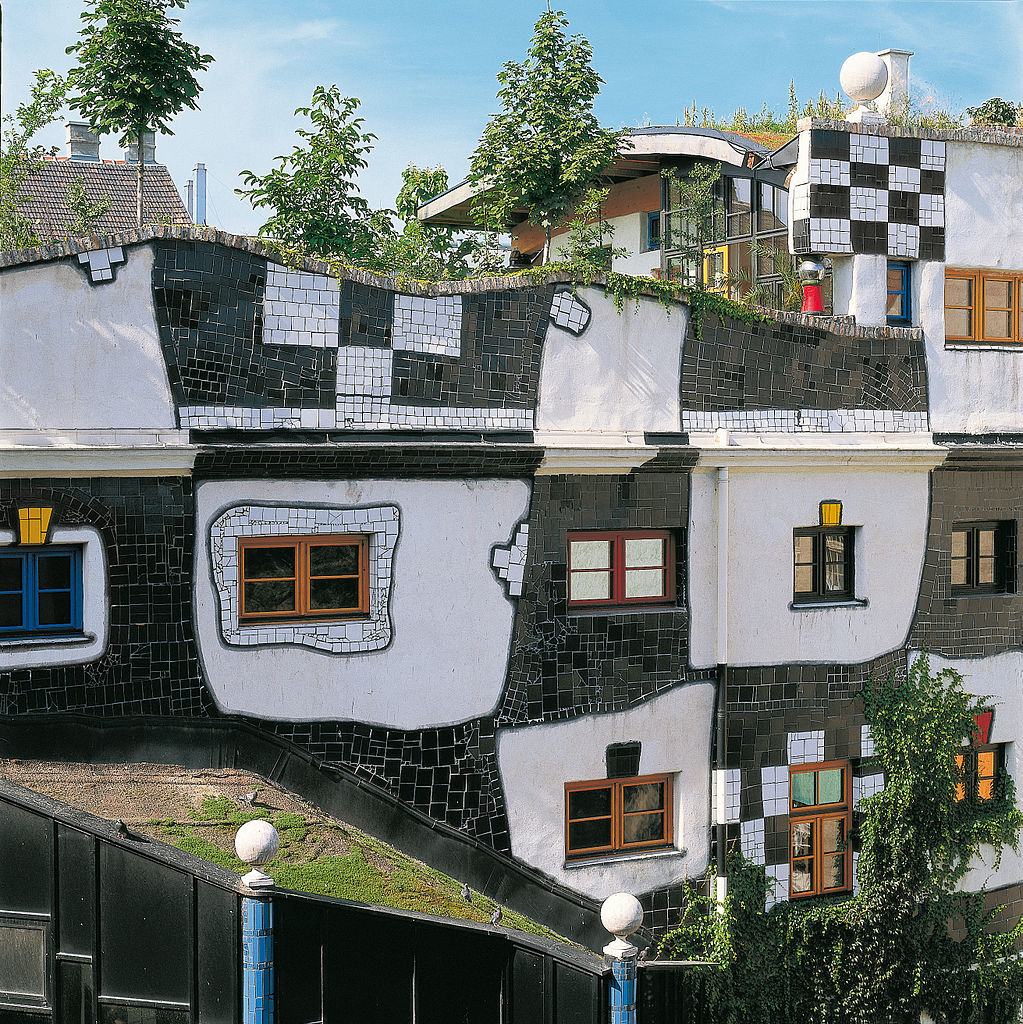
- Mariahilf: Mariahilf is a lively district southwest of the city center, known for its trendy shops, cafés, and restaurants. It offers a mix of mid-range hotels, guesthouses, and apartment rentals. Mariahilf is also home to the popular shopping street, Mariahilfer Straße.
- Neubau: Adjacent to Mariahilf, Neubau is a hip and artistic district known for its creative scene, independent boutiques, and trendy bars. It offers a range of accommodations, including boutique hotels, design-oriented hostels, and unique vacation rentals.
For an in-depth look at recommended neighborhoods, check out my post on places to stay in Vienna.
Tips for Booking Your Accommodations:
- I recommend you use a reputable booking website like Booking.com, VRBO, or the official websites of hotels.
- Make a list of amenities and options that you require, like wi-fi, air conditioning, breakfast, and locations convenient to transportation. Use this list to compare properties.
- Read reviews and check ratings. For instance, I use Booking.com and will only book properties that have higher ratings than 8.0.
- Check for any additional charges or fees, such as city taxes or cleaning fees, which may apply to your booking.
In short, consider the various options available in Vienna, explore different neighborhoods, and use reputable booking platforms to find the perfect place to stay that suits your preferences and this will enhance your overall Vienna experience.
Insider Tips on Local Etiquette
When in Vienna, do as the Viennese do! It’s always a more pleasant experience in a new destination with good manners.
Polite Ways:
- Greet with a handshake and eye contact. Use formal titles like “Herr” (Mr.) or “Frau” (Mrs.) followed by the person’s surname, unless they invite you to use their first name.
- Viennese people generally value politeness and courtesy, so remember to say “Bitte” (please) and “Danke” (thank you) in appropriate situations.
Punctuality and Formality:
- Punctuality is highly valued in Vienna, so be on time for appointments and events.
- Vienna has a more formal and reserved culture, particularly in professional and public settings. Conduct yourself with courtesy.
Dress Code:
- Vienna has a reputation for elegant sophistication. When visiting upscale establishments or attending formal events, it is advisable to dress accordingly. However, casual attire is generally acceptable in most other situations.
Dining Etiquette:
- When you arrive at a restaurant, wait to be shown to your table. Don’t seat yourself without permission.
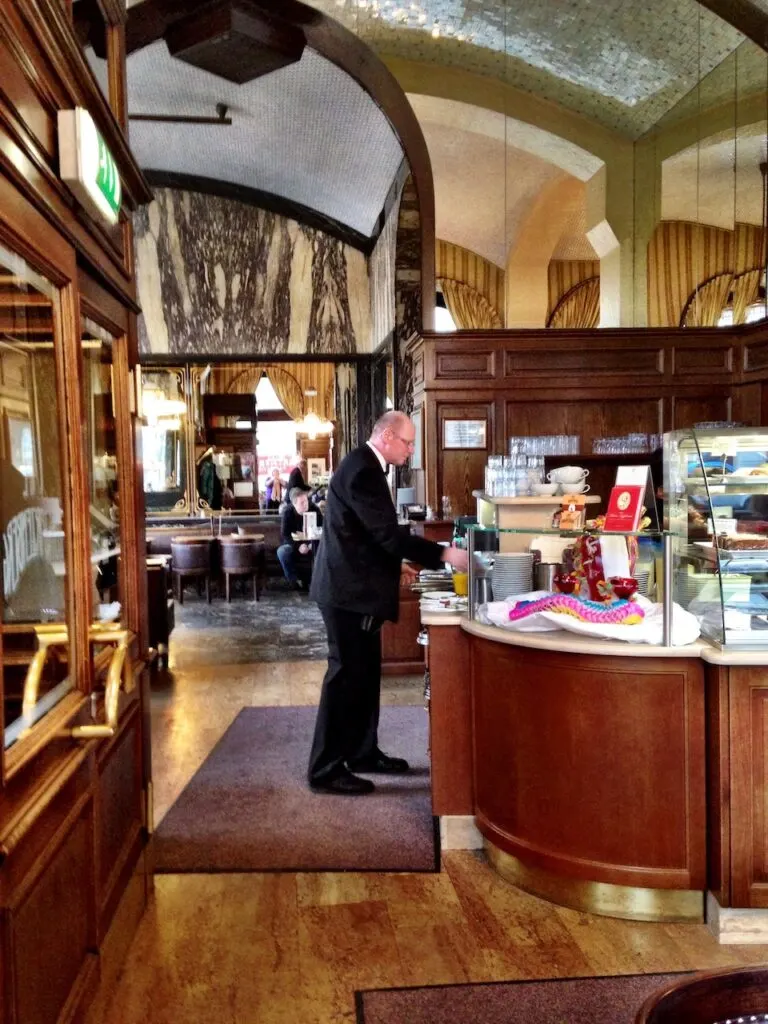
Language:
- Learn a few basic German phrases such as “Guten Tag” (good day), “Bitte” (please), and “Danke” (thank you). Locals everywhere appreciate the effort to communicate in their language.
Music and the Arts:
- Vienna has a rich musical heritage, so why not attend a classical music concert or opera performance?
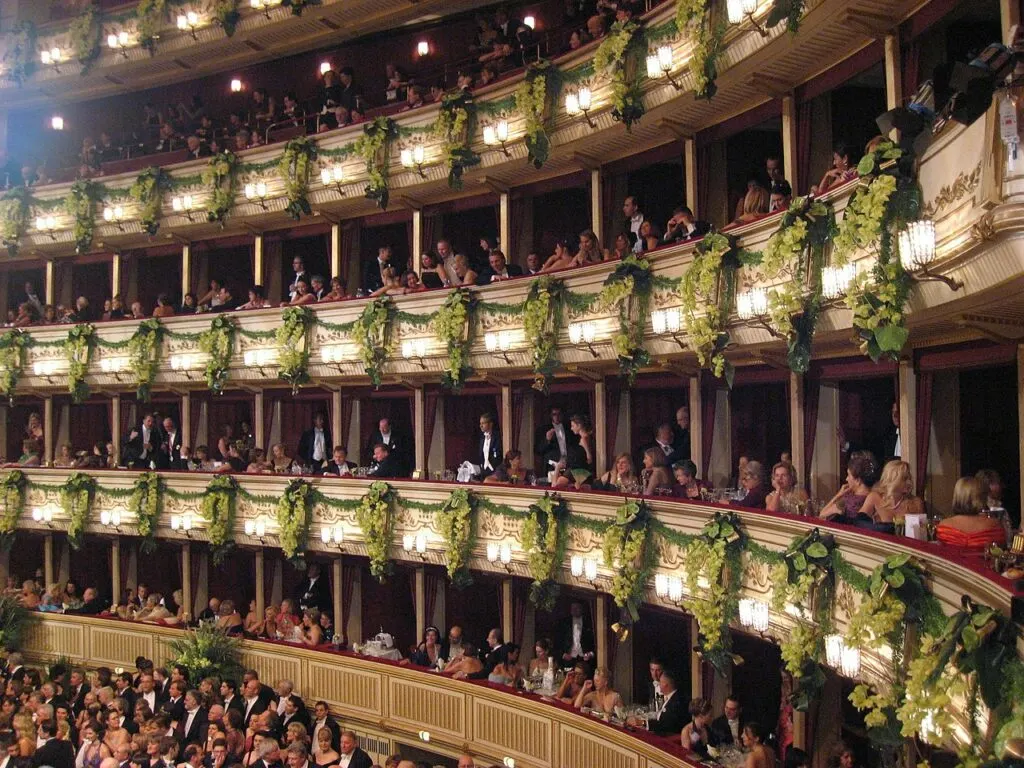
Public Behavior:
- In public spaces, maintain a level of quietness and avoid loud or disruptive behavior.
- Respect the cleanliness of public areas and dispose of trash appropriately in designated bins.
Tipping:
- Tipping is customary in Vienna. It is common to tip around 5-10% of the bill in restaurants, cafes, and for taxi services. Make sure to check if a service charge is already included in the bill before deciding on the tip amount.
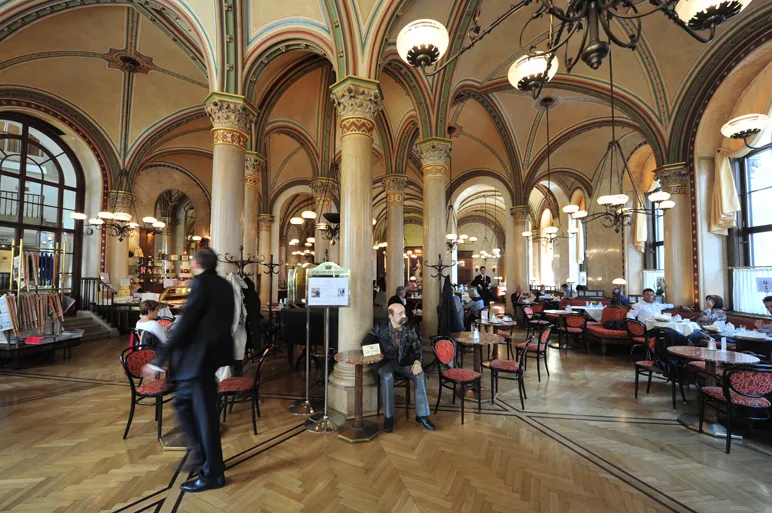
Safety and Health Considerations
Prioritize your well-being and take necessary precautions for health and safety. The following are tips to ensure a safe and healthy trip.
General Safety Tips
- Secure your belongings and put valuables like passports, cash, and electronics in your hotel safe. Develop awareness when you are out and don’t display expensive items in public.
- Stay in well-lit and populated areas. It’s generally safe to explore Vienna’s main tourist areas and public transportation hubs, but exercise caution in crowded places and be wary of pickpockets, as you would in any of the big European cities.
- Use reputable transportation: Opt for licensed taxis, ride-sharing services, or public transportation. Avoid unmarked taxis or unauthorized transportation providers.
- Be cautious with strangers and socializing: While Vienna is a friendly city, exercise caution when interacting with strangers. Use your judgment and maintain personal boundaries. Avoid sharing personal information or accepting unsolicited invitations.
Health Considerations
- Check official travel advisories: Before your trip, check the official travel advisories issued by your home country or relevant health authorities. These advisories provide information on any health risks, recommended vaccinations, or specific precautions to take while visiting Vienna.
- Carry necessary medications and travel insurance: If you have specific medical conditions, ensure you have an ample supply of necessary medications for the duration of your stay. Purchase travel insurance that would cover medical expenses in case of accident or illness.
- Stay hydrated and practice good hygiene: Vienna has clean drinking water, so stay hydrated by drinking tap water or bottled water. Carry hand sanitizer for situations where soap and water are not readily available.
- European Health Insurance Card (EHIC): If you are a citizen of an EU/EEA country, carry a valid EHIC. This card will get you access to healthcare services in Vienna at the same cost as locals. However, you should still have travel insurance, as EHIC may not cover all situations.
- Seek medical assistance if needed: In case of any health issues, Vienna has excellent healthcare facilities. Dial the European emergency number 112 for urgent medical assistance or visit a hospital or clinic for non-emergency care.
These are all general guidelines that are relevant to any location. Make sure you’re informed about current events. Before your trip, check the latest travel advisories and consult with your healthcare professionals regarding any specific health concerns or recommended vaccinations for Vienna.
Conclusion
Vienna is a must-visit for travelers who enjoy history, culture and culinary adventures. From its grand imperial palaces to its welcoming neighborhoods, Vienna has something for everyone.
Remember to prioritize your safety by keeping your belongings secure, staying aware of your surroundings, and using trusted transportation services. Stay informed about health considerations, carry necessary medications, and check official travel advisories to ensure a healthy trip.
Lovely Vienna awaits to welcome you with open arms, ready to enchant you with its unmistakable grandeur, fascinating history, and cultural riches. I hope this post helps you make the most of your visit to Vienna and create lifelong memories of your trip.
Safe travels and enjoy your time in Vienna!
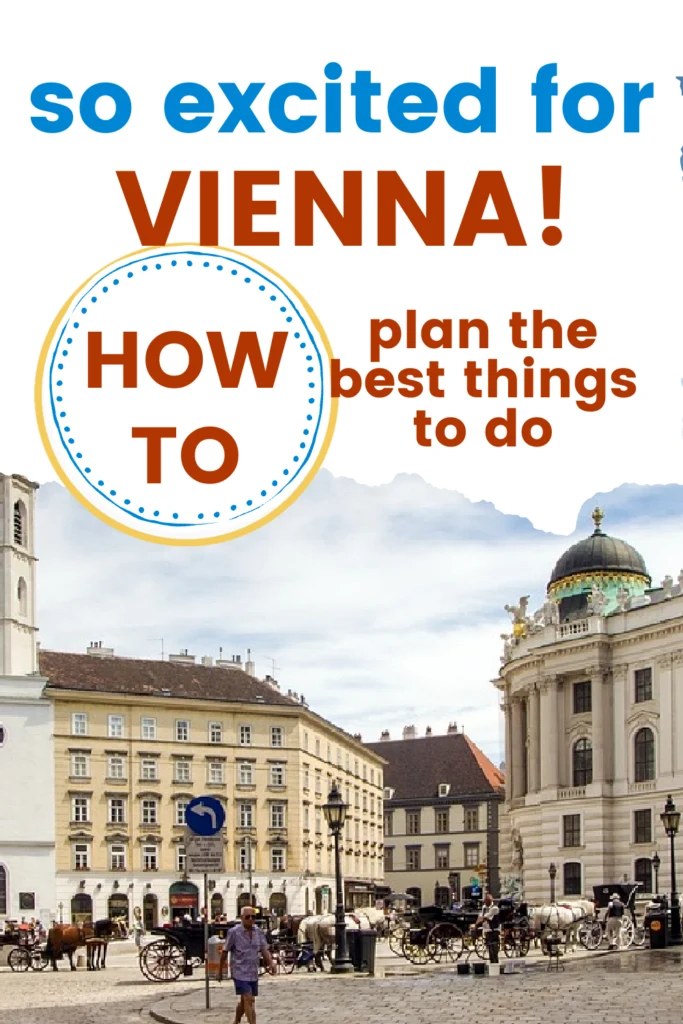
Tips for Trip Success
Book Your Flight
Find an inexpensive flight by using Kayak, a favorite of ours because it regularly returns less expensive flight options from a variety of airlines.
Book Your Hotel or Special Accommodation
We are big fans of Booking.com. We like their review system and photos. If we want to see more reviews and additional booking options, we go to Expedia.
You Need Travel Insurance!
Good travel insurance means having total peace of mind. Travel insurance protects you when your medical insurance often will not and better than what you get from your credit card. It will provide comprehensive coverage should you need medical treatment or return to the United States, compensation for trip interruption, baggage loss, and other situations.Find the Perfect Insurance Plan for Your Trip
PassingThru is a participant in the Amazon Services LLC Associates Program. As an Amazon Associate I earn from qualifying purchases.
To view PassingThru’s privacy policy, click here.

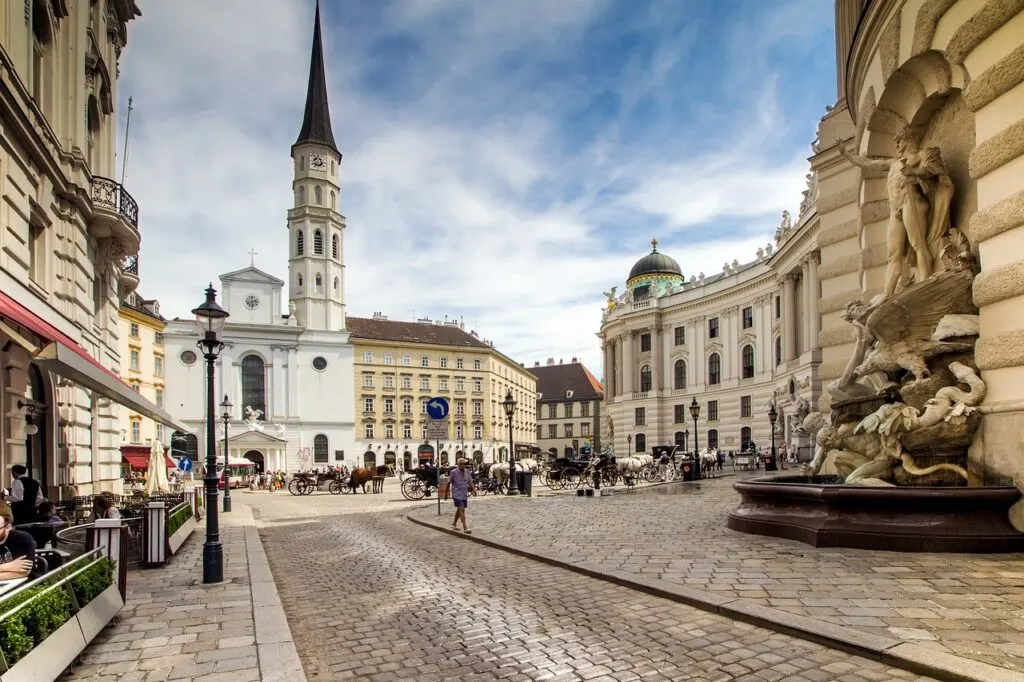

Ksenia
Saturday 27th of May 2023
I’ve been to Vienna before and am now planning my first vacation with kids there, and your list had a bunch of new ideas for me!!! I can’t wait until they get their first bite of Sacher torte, haha
Jennifer
Monday 22nd of May 2023
Your articles are so inspiring! I want to go to Vienna so badly now after reading this! Amazing info!
Chichi
Sunday 21st of May 2023
Vienna! A place I Must visit soon. Thanks for this informative article.
Sue
Saturday 20th of May 2023
What wonderful information you have provided here. I feel like I've been transported to Vienna! Just starting my trip planning so I'll be referring to this often - thank you!